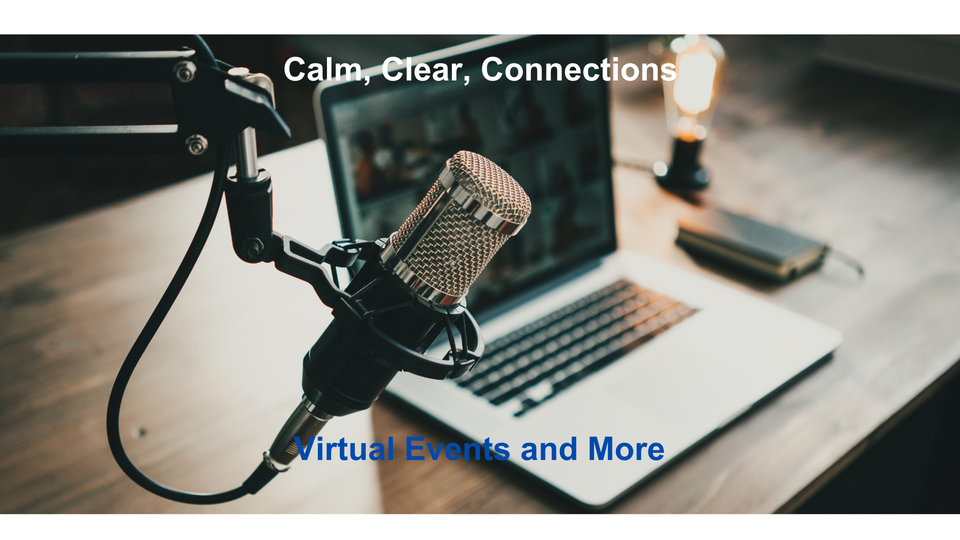The Hidden Tool of Great Virtual Events: Using Music to Cue and Connect Participants

In the world of virtual events, every moment is engineered: from the registration flow to the chat prompts to the Q&A. But often one of the most powerful tools—music—gets overlooked. Let’s examine why using music as a signaling device can improve your virtual meeting or webinar, and then walk step by step through how to implement it in Zoom.
Why Music as a Signal Matters
When attendees dial into your event, their attention is fragmented. They may be checking email, juggling tasks, or simply fatigued by back-to-back sessions. In this environment, a clear transition cue becomes critical. That’s where music enters. It can serve at least three functions:
- Reset and re-focus: At the end of a break, a brief musical cue signals “we’re restarting now.” It gives attendees a moment to shift mindset, close tabs, stretch, and ready themselves.
- Tone-setting: Before a major segment—keynote, panel, breakout—the right music sets emotional expectation: confident, playful, serious, innovative. The mood precedes the message.
- Flow management: In a longer session with multiple segments, music frames transitions. Rather than a jump cut (“And now…”), you get a musical bridge that feels intentional and human.
This is particularly important for you as a virtual event producer: when you deliver a purpose-first design, every moment should reinforce intention, and music is a subtle but effective tool.
How to Share Music in Zoom
Here’s how you can implement this with Zoom, based on official guidance:
- Launch or join your meeting using the Zoom desktop app (Windows/macOS/Linux) or the Chrome Web App.
- To share music while sharing your screen: click Share Screen, select the window or desktop you’ll share, then check the “Share Sound” box. Optionally click the little arrow next to “Share Sound” and choose between Mono and Stereo (High Fidelity) audio.
- To share music without sharing your screen (i.e., music only): click Share Screen, then go to the Advanced tab, select Computer Audio, then click Share. Now your computer’s audio (so your music app or browser) is streaming to participants.
- Volume control is external to Zoom’s “shared audio.” You adjust volume in the music app/browser or your device settings—Zoom’s main volume slider won’t control streamed music volume separately.
- Note an important technical detail: If someone joins by both phone and computer, and you have “Share Computer Sound” enabled, the audio might play through both their devices, causing feedback. To avoid this, ask them to mute one device’s speaker.
Best Practices & Pro Tips
- Pre-test: Before your live event, test the music cue with a colleague to ensure volume is right and the transition feels clean.
- Short is better: Use a 30-60 second clip—long enough to transition, short enough to maintain momentum.
- Be intentional about mood: Match the track to your brand and session vibe. An upbeat track signals “let’s go,” a mellow one signals “reflection begins.”
- Signal explicitly if you want: You might say, “we’ll restart in 60 seconds,” then launch the music—reinforcing both verbal and non-verbal cues.
- Avoid distraction: Make sure the music isn’t too loud, too “attention-grabbing,” or conflicting with voice-overs or narration.
In Conclusion
As someone who designs virtual events with clarity and purpose, adding music as a signaling device is a simple, high-impact tool you may not have used yet. It supports flow, resets attention, and uplifts the emotional tone of your session. Implementing it in Zoom is straightforward—and once you’ve tried it once, you’ll likely find yourself wondering how you ever ran without it. Ready to cue the track and shift the vibe? I’d love to hear how it goes for you.
For more than three decades, the Red Hot Organization has been doing something remarkable: using music and culture to change the way the world talks about public health.
Born at the height of the HIV/AIDS crisis, Red Hot didn’t follow the traditional path of awareness campaigns. Instead, they invited artists to reinterpret the Great American Songbook, Afrobeat, jazz, electronic music, and indie rock—whatever made sense for the moment—and turned those collaborations into vehicles for stigma reduction, fundraising, and global conversations.
Red Hot + Blue, their first major compilation, paired Cole Porter songs with striking visual storytelling. Later projects—Stolen Moments: Red Hot + Cool, Red Hot + Riot, Dark Was the Night, and many others—brought together hundreds of artists who donated their time and creativity. Collectively, these projects have generated millions for HIV/AIDS organizations while reaching audiences who may never have encountered public-health messaging through traditional channels.
What I find powerful is the model itself: culture as a Trojan horse for empathy.
Instead of preaching, Red Hot creates emotional space for people to feel connected to an issue. That’s a lesson for any mission-driven organization. When we pair purpose with art or data with humanity, we invite people to move closer rather than look away.
Today, Red Hot’s mission continues, evolving into broader questions of health equity, access, and community. And their archive stands as one of the most compelling examples of how storytelling, music, and collaboration can shape public understanding.
If your organization is exploring new ways to communicate a message—especially one that’s urgent or complex—Red Hot’s playbook is worth studying. It’s culture-first communication at its most effective.
Feel free to share this newsletter with a friend struggling with virtual events.
My company is Calm, Clear, Media. I produce purpose-driven virtual events for nonprofits and member organizations. I don’t just manage Zoom calls; I create experiences that reflect your mission and engage your audience. My job is to make sure everything runs smoothly so my clients can focus on impact.
#VirtualEvents #CoHost #Engagement #TechSupport #Professionalism #Teamwork